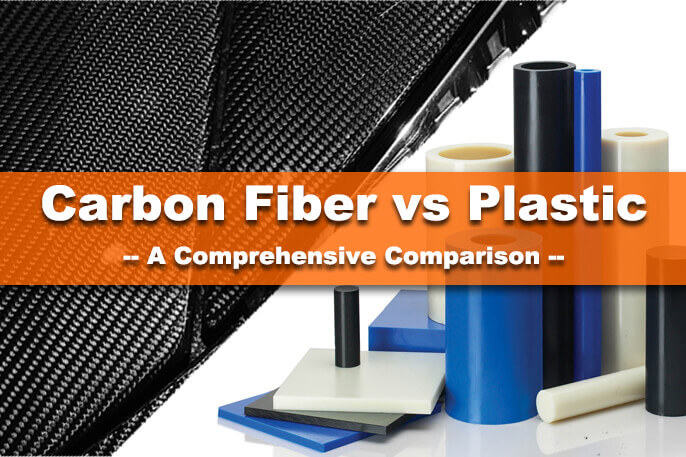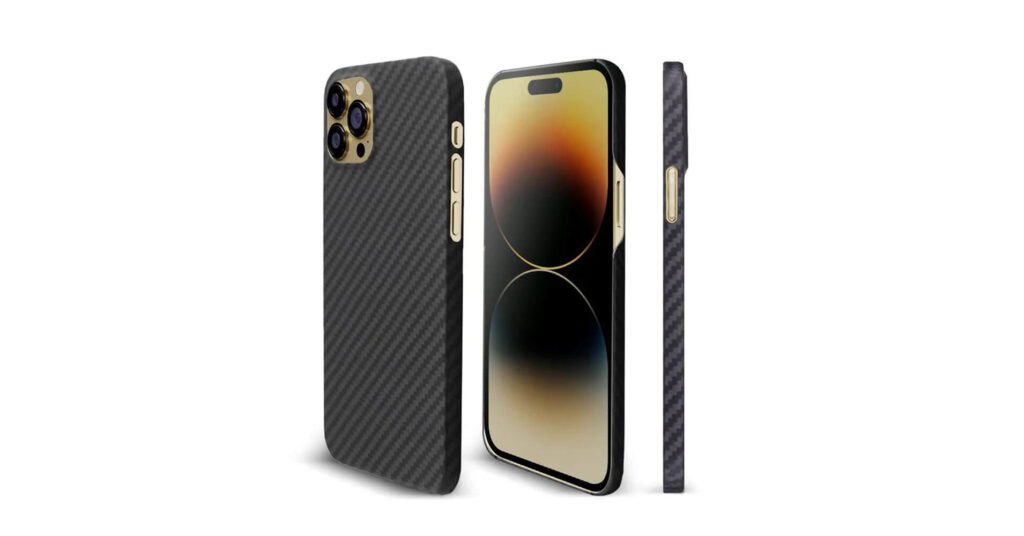When it comes to choosing materials for manufacturing, design, and construction, carbon fiber and plastic are often compared. Both materials have unique properties that make them suitable for different applications. In this article, we will explore the differences between carbon fiber and plastic, examining their strengths, weaknesses, and optimal uses. We will also cite some research data to provide a solid basis for our comparison and answer common questions like “is carbon fiber plastic?”, “is carbon fiber stronger than plastic?”, and “is carbon fiber lighter than plastic?”.
What is Carbon Fiber?
Carbon fiber is a strong, lightweight material made from thin strands of carbon atoms bonded together in a crystalline structure. It is known for its exceptional strength-to-weight ratio, making it ideal for applications where weight reduction is crucial without compromising strength. Carbon fiber is made up of crystalline filaments and is often used in carbon fiber infused resins and pre-preg woven carbon fiber.
What is Plastic?
Plastic is a synthetic material made from polymers. It is a versatile, lightweight thermoplastic polymer that can be molded into various shapes through processes like injection molding. Plastics come in many forms, including polyethylene, polypropylene, and polyvinyl chloride (PVC), each with its own set of properties and uses. ABS plastic is a common strong, rigid plastic used in many applications.
Carbon Fiber vs Plastic: Key Differences Comparison
Strength and Durability
Carbon Fiber: Carbon fiber is renowned for its high tensile strength and rigidity, which means it can withstand a lot of force without breaking. It is also highly durable and resistant to corrosion, fatigue, and chemicals. According to a study by the National Institute of Standards and Technology (NIST), carbon fiber composites can have tensile strengths as high as 5,000 MPa (megapascals). Carbon fiber’s strength and durability make it a top choice for car modifications like spoilers and side skirts.
Plastic: While plastic is generally not as strong as carbon fiber, it can be engineered to be quite durable. Some high-performance plastics, such as polycarbonate and ABS, offer good impact resistance and strength. ABS plastic is known for its strength and is less brittle than many other plastics. However, they typically have tensile strengths in the range of 40-80 MPa, significantly lower than carbon fiber.
Weight
Carbon Fiber: One of the standout features of carbon fiber is its low weight. It is about five times lighter than steel and twice as stiff. This makes it highly desirable in industries like aerospace and automotive, where reducing weight is crucial for performance and fuel efficiency. When comparing carbon fiber vs plastic weight, carbon fiber comes out on top as the lighter option.
Plastic: Plastic is also lightweight but generally heavier than carbon fiber. Its weight can vary depending on the type and density of the plastic used. For example, polyethylene has a density of approximately 0.94 g/cm³, while carbon fiber composites have densities around 1.75 g/cm³.
Cost
Carbon Fiber: The production of carbon fiber is complex and expensive. The cost of raw materials and the manufacturing process make carbon fiber significantly more expensive than most plastics. According to a report by MarketsandMarkets, the average cost of carbon fiber is around $15 per pound. So is carbon fiber cheap? Not compared to most plastics.
Plastic: Plastic is relatively inexpensive to produce. The cost of plastic can vary widely depending on the type and quality, but it is generally much cheaper than carbon fiber. For example, polyethylene can cost as little as $0.50 per pound.
Applications
Carbon Fiber: Due to its strength and lightweight properties, carbon fiber is used in high-performance applications. These include aerospace components, sports equipment (like tennis rackets and bicycles), automotive parts, carbon phone cases, and even in the construction of high-end musical instruments. Carbon fiber-reinforced plastic (CFRP) is commonly used in these applications.
Plastic: Plastic’s versatility makes it suitable for a wide range of applications, from packaging and household items to automotive parts and medical devices. Its ability to be easily molded and mass-produced makes it a go-to material for many industries. ABS plastic, in particular, is used in applications requiring good strength and rigidity.
Environmental Impact
Carbon Fiber: The production of carbon fiber is energy-intensive and not particularly eco-friendly. However, its durability and longevity can offset the initial environmental impact. Additionally, efforts are being made to recycle carbon fiber composites, though the process is still in its early stages. Carbon fiber itself does not degrade over time, but the resins and glue joints used with it can.
Plastic: Plastic has a significant environmental impact, primarily due to its disposal issues. Many plastics are not biodegradable, leading to pollution and landfill accumulation. Recycling rates for plastic are improving, but a large amount still ends up in the environment.
Carbon Fiber vs Plastic Comparison Table
| Property | Carbon Fiber | Plastic |
|---|---|---|
| Tensile Strength | Up to 5,000 MPa | 40-80 MPa |
| Density | ~1.75 g/cm³ | ~0.94 g/cm³ (Polyethylene) |
| Cost | ~$15 per pound | ~$0.50 per pound |
| Weight | Very lightweight | Lightweight |
| Durability | Extremely durable | Durable but varies by type |
| Stiffness | High stiffness | Lower stiffness than carbon fiber |
| Chemical Resistance | Excellent chemical resistance | Varies by plastic type |
| Temperature Tolerance | High temperature tolerance | Lower than carbon fiber |
| Thermal Expansion | Low thermal expansion | Higher than carbon fiber |
| Applications | Aerospace, sports equipment, automotive, spoilers, side skirts, carbon money clips, carbon card holders |
Packaging, household items, medical devices |
| Environmental Impact | High production impact, recyclable | High disposal impact, recyclable |
Conclusion
In conclusion, both carbon fiber and plastic have their own set of advantages and disadvantages. Carbon fiber excels in strength, durability, rigidity, and lightweight applications but comes at a higher cost. Plastic, while not as strong or stiff, is versatile, inexpensive, and suitable for a wide range of uses.
When choosing between these materials, consider the specific requirements of your application, including the importance of weight, cost, lifespan, chemical resistance, temperature tolerance, and environmental impact. By understanding the properties and uses of each material, you can make an informed decision that meets your needs, whether that’s choosing carbon fiber for high-performance car modifications or ABS plastic for durable, low-cost parts.
So is carbon fiber metal or plastic? Neither, it’s a unique composite material. Is carbon fiber brittle? No, it’s actually quite flexible and resistant to breaking. How can you tell if carbon fiber is real? Real carbon fiber has a distinctive woven appearance and is extremely lightweight for its strength. Fake carbon fiber is usually a plastic with a printed carbon fiber pattern on the surface.
References:
National Institute of Standards and Technology (NIST). “Tensile Properties of Carbon Fiber Composites.” NIST.gov
MarketsandMarkets. “Carbon Fiber Market: Global Forecast to 2026.” MarketsandMarkets.com
PlasticsEurope. “Plastics – the Facts 2020.” PlasticsEurope.org
By incorporating these points, we aim to provide a clear and SEO-friendly comparison of carbon fiber and plastic, aiding readers in making an informed choice based on their specific needs.


